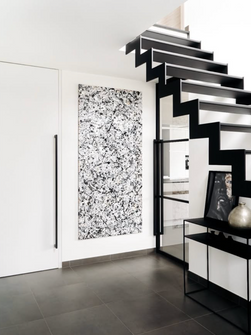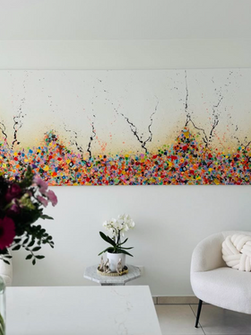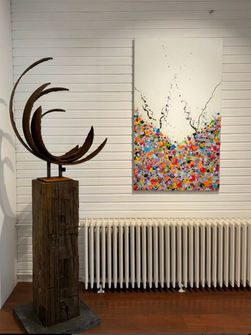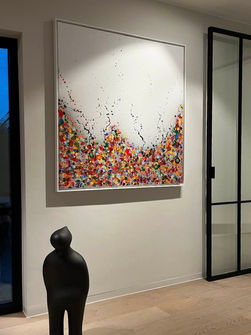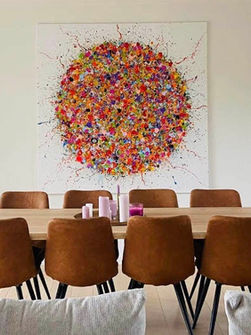
Discover
Denis DeGloire
Explore the abstract
Step into the world of Denis De Gloire
and be swept away by a wave of untamed energy and vibrant color. Through the workings of colorful interplay, the canvas-lined walls pulsate with raw emotion and unrestrained creativity. A symphony of hues, each painting a testament to the artist’s mastery of abstract expressionism.
As you stand before each individual work, you find yourself drawn into their depths, captivated by the dance of light and shadow, the subtle nuances of color that shift as your eyes move across the canvas. Every splash, drip, and color blend seamlessly, yet each element stands out boldly, making its own unique statement. It evokes a kaleidoscope of feelings–joy, excitement, and a touch of unease. These paintings are not mere works of art; they are portals to a realm where emotions run wild, and creativity knows no bounds.
.jpg)
Featured Bie Baert - Antiques and eccentricies Dealer
.jpg)
Abstract methodology, unshackled by the rules of conformity
invites the viewer to construct their personalized interpretation of the works. When you experience De Gloire’s collection, you become not just a spectator; you are an active participant in the creative process, brought to life before your eyes. Viewing his collection is not just about looking at art; it is about being immersed in it. The paintings demand your attention, igniting the spark of curiosity. You find yourself interpreting the colors, the shapes, and the passion that the artist has conveyed, and in doing so, create your own unique experience.
Text by Daphne Jäckel





